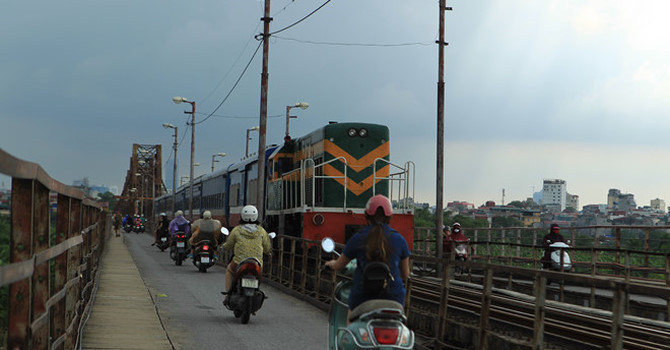
Vu Anh Tuan, director of the Vietnam-Germany Transport Research Institute, said strategically a country cannot develop without the existence of high-speed railway system.
The system will not only have direct impact on the transport situation, but also an indirect impact on all aspects of socio-economic development.
Rail expressways will help shorten the time needed to travel, strengthen exchanges, redistribute human resources, and create an impetus for harmonious development among localities. They also can help restructure the urban space when shopping malls arise at rail stations, thus changing the face of urban areas.
Rail expressways will help shorten the time needed to travel, strengthen exchanges, redistribute human resources, and create an impetus for harmonious development among localities. They also can help restructure the urban space when shopping malls arise at rail stations, thus changing the face of urban areas.
However, the operation of shinkansen in Japan, the model that Vietnam’s North-South Expressway is striving for, showed that the express train was competitive at the travel distance of 800 kilometers for business trips, and up to 1,000 kilometers for tours or family visits. For travel of more than 800 kilometers, passengers go by air.
A survey found that 90 percent of passengers decided to travel by air for the Tokyo-Hakata route, 1,180 kilometers in length, while only 10 percent choose shinkansen. Though the air ticket was $40 more expensive, passengers could save two hours.
In Vietnam, experts have also warned that the rail express may be uncompetitive with low cost carriers, which run sale promotion campaigns with surprisingly low airfares.
Tuan cited Vitranss 2, the national transport network development plan, as saying that 24 airports will be upgraded and built, including four located on the north-south backbone.
This means that in the near future the air transport network will be expanded and the service quality will be upgraded. If so, the competition between expressway and air would occur, as it has in Japan.
“In 30-40 years, most passengers will travel by air from Hanoi to HCMC instead of rail expressway. Also, the life expectancy of the north-south expressway is 100 years or more,” he said.
Deputy Minister of Transport Nguyen Ngoc Dong thinks the rail expressway will have to compete with air. The railway will be competitive with both road and air for distances of less than 800 kilometers, and uncompetitive for distances of more than 800 kilometers.
The consultancy firm also pointed out that only 10 percent of passengers will travel on the expressway for the entire north-south route, while 80 percent of passengers will take short-distance trips.
“After 2030, however, when the transport demand is 2-3 times higher than now, no means of transport will be competitive with high-speed railway in terms of mass transport capacity,” Dong said.
Thanh Lich